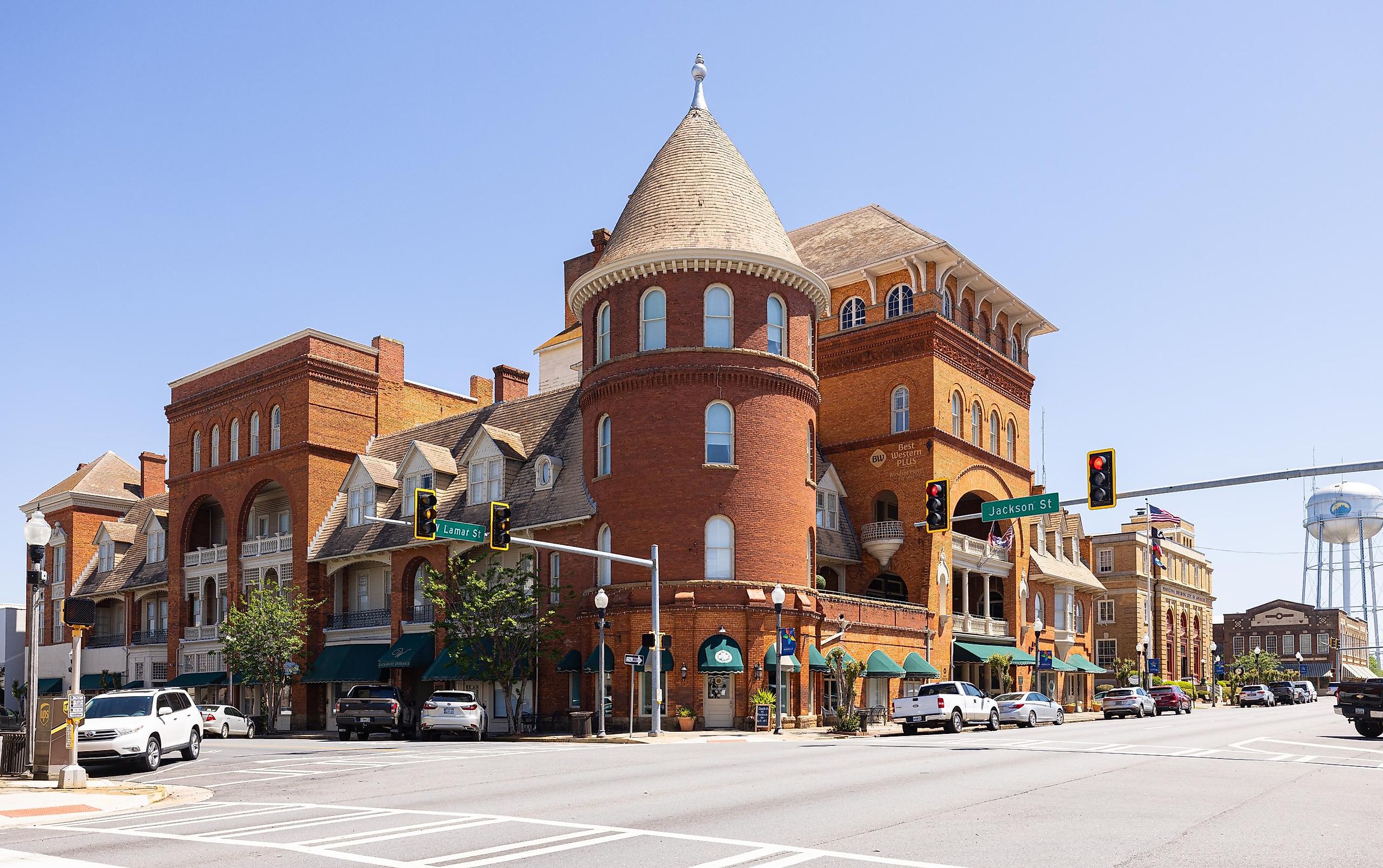
8 Old-World Towns to Visit in Georgia
One of the original thirteen colonies and the fourth state to join the Union, Georgia has a profound history that remains well-preserved, even in the 21st century. Although larger cities like Atlanta and Savannah offer plenty of historical sites, some of the state's best-kept secrets can be found in its small, lesser-known towns. From centuries-old oak trees to Native American artifacts and abandoned gold mines, these eight towns show an interesting and authentic side of American history dating back centuries.
Thomasville

Thomasville was founded in 1825 and named after Jett Thomas, an American General in the War of 1812. Today, it has a population of nearly 19,000 residents. The Thomasville History Center is a great place to begin, showcasing artifacts, photographs, and seven historic buildings that will immerse visitors in the town’s past. The Lapham-Patterson House is another fascinating historic site, a Queen Anne-style home constructed in 1885 that is notably known for not having any square rooms. Other historic landmarks around town include the All Saints Episcopal Church and the Power of the Past Museum. However, the town's oldest landmark isn’t manmade at all—The Big Oak, dating back to around 1685, boasts a limb span of more than 165 feet and a trunk circumference of over 26 feet, making it a must-see natural landmark for visitors.
Eatonton

Eatonton was founded in 1807 following the Revolutionary War and officially incorporated as a city in Georgia in 1879. Today, there are roughly 6,500 residents. The town has several museums that share different aspects of its history, including the Old School History Museum, Georgia Writers Museum, and Uncle Remus Museum, Eatonton also has preserved elements of its Native American history, which visitors can see in sites such as the Rock Eagle Mound, a stony formation shaped like a bird that Native Americans built, now listed on the National Register of Historic Places. Located along the Historic Piedmont Scenic Byway, visitors can also go for a beautiful drive, passing through National Forests, rivers, historic houses and buildings, and more.
Rome
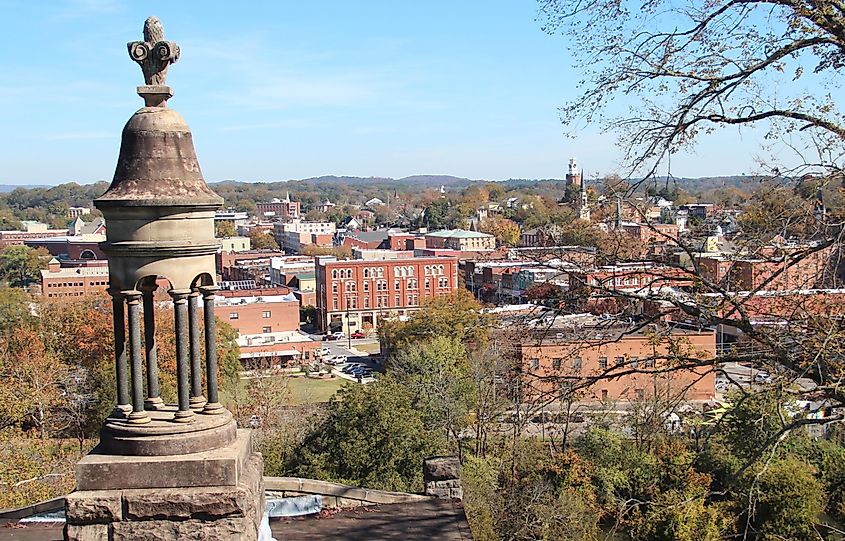
This Rome may not be in Italy, but it still has plenty of history and architecture to explore, with roots dating back to its founding in 1834. The Chieftains Museum & Major Ridge Home is an important site to visit, once home to the influential Cherokee leader, and now honoring the area's Indigenous heritage and the cultural conflicts leading up to the Trail of Tears. Other important historic landmarks include the City Clock Tower, one of Rome’s most prominent icons, the Admiral Towers Plaza, dedicated to Admiral John Henry Tower who was the Father of Naval Aviation, and the Freedom Garden, dedicated to the former Civil Rights Movement demonstrators in Rome. AdventHealth ECO Greenway is a great place to spend the afternoon after touring some of the historic spots, featuring a riverfront trail system that connects the Historic downtown area to parks, shops, and restaurants.
Dahlonega

People began flocking to Dahlonega in 1829, following the first documented discovery of gold in the area. Today, visitors can appreciate its rich mining history and cultural heritage through a variety of attractions, such as the Consolidated Gold Mine, established in the early 20th century, about 200 feet underground. Crisson Gold Mine is another popular mining attraction, featuring an open-pit gold mine that functioned from 1847 until the 1980s. Visitors can even pan for their own gold after touring the mine and mill. Other historic landmarks include the Mt. Hope Cemetary, established in 1833, the 1884 Lumpkin County Jail, and the Dahlonega Gold Museum. Besides its history, Dahlonega is also near several gorgeous waterfalls that travelers can visit, including Amicalola Falls, DeSoto Falls, Raven Cliff Falls, and Dicks Creek Falls.
Watkinsville
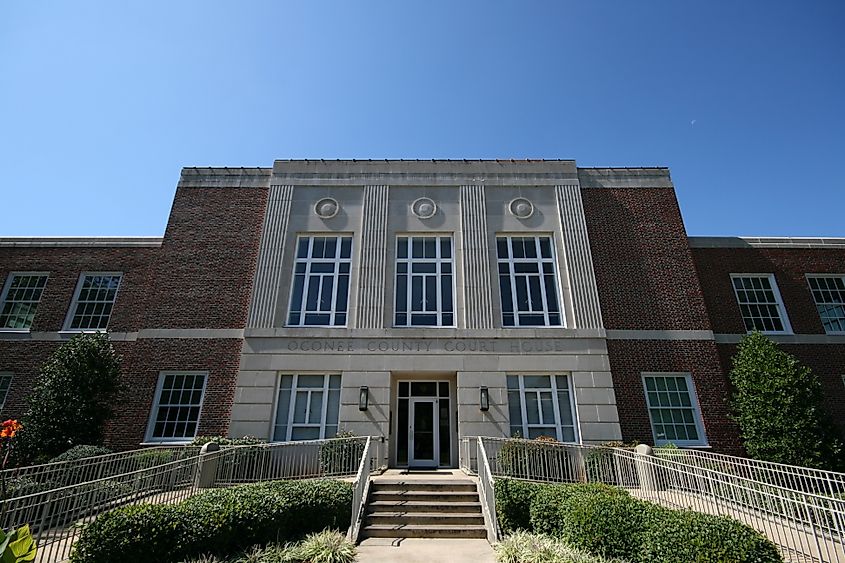
Watkinsville has a documented history dating back to 1791 when it was named after Colonel Robert Watkins. It was once considered to be located one of the country’s most dangerous and unknown frontiers. Today, it has around 3,000 residents and is just about a 15-minute drive from the historic city of Athens, Georgia. Visitors can start their stay at the Oconee County Welcome Center, which also is housed in a home from the 1790s. The Oconee Cultural Art Foundation is an art gallery that shares the town’s cultural heritage as well, featuring local, regional, and national art exhibitions. Visitors can also kayak down the Oconee River, imagining themselves exploring the 18th-century frontier.
Americus
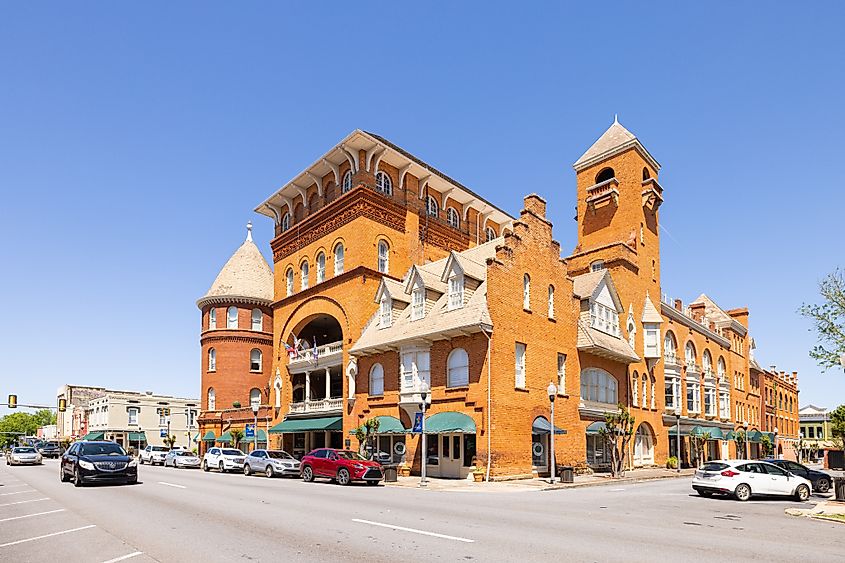
Although Americus originated as a small courthouse town, it experienced a boom in the mid-19th century with the arrival of the railroad. Today, the city has a population of about 15,500 residents. One of the town’s best-preserved historic landmarks is the Rylander Theater, which dates back to the early 20th century and offers periodic tours as well as live shows throughout the year. The Windsor Hotel is another site, a Victorian-style hotel from 1892, featuring luxurious chandeliers, marble floors, and carved golden oak. The Souther Field Airport is also a point of pride for Americus, where Charles A. Lindbergh once bought his first airplane in 1923. After a busy day visiting Americus’s sites, visitors can unwind at Thirteenth Colony Distilleries, Georgia’s only craft distillery, offering small-batch, handcrafted distilled spirits in the facility.
Hartwell
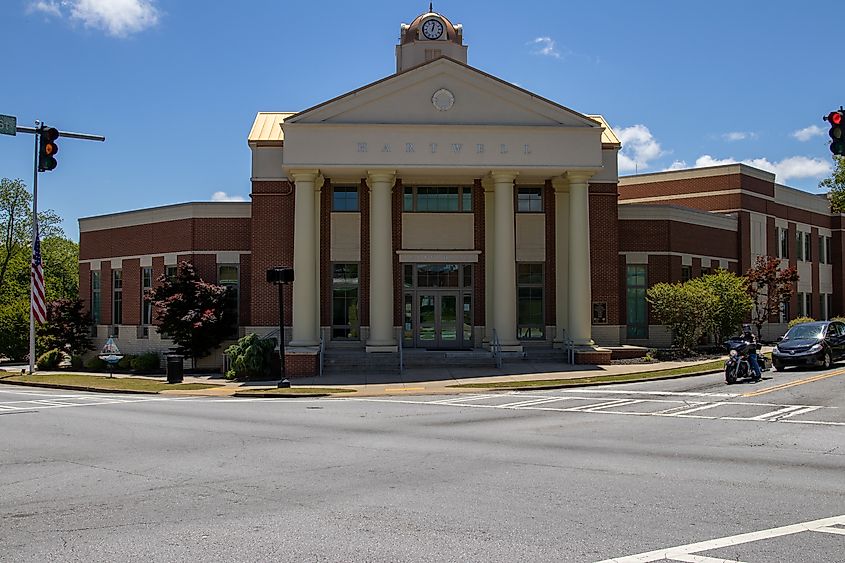
Hartwell, founded in 1854, was named after the Revolutionary War rebel heroine Nancy Morgan Hart. Today, the town is home to around 4,500 residents. The Hart County Historical Society and Museum further explore the life of Nancy Hart and the history of Hartswell through artifacts donated by residents. The museum is also housed in a beautiful, Victorian-style home dating back to 1881. Downtown Hartwell is also filled with historic buildings that visitors can enjoy on a stroll, with the district being marked as a Georgia Main Street City. For shoppers, antique stores and specialty stores line the downtown area as well. Lake Hartwell is one of the town’s most popular recreational spots, with residents and tourists alike enjoying canoeing, sailing, boating, and jet skiing on its waters.
Brunswick
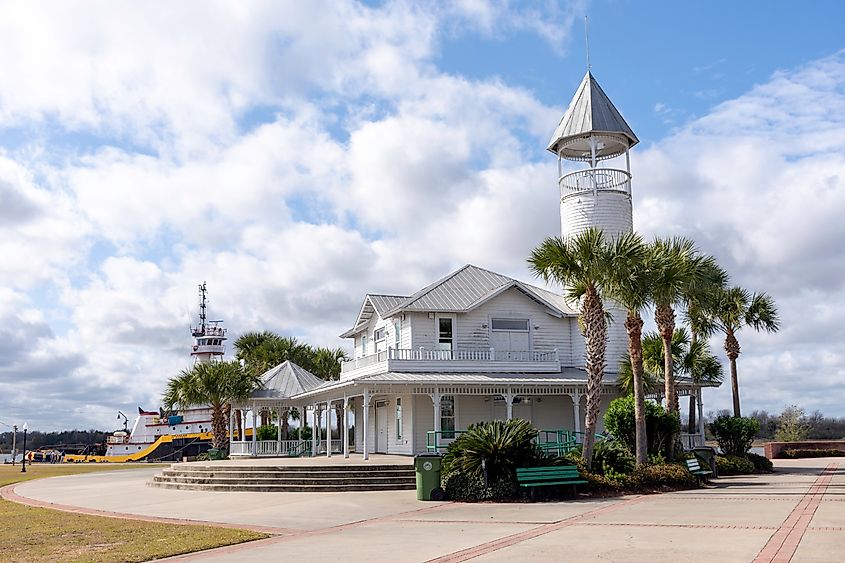
The Province of Georgia officially established the town of Brunswick in 1771, with the state incorporating it as a city in 1856. Today, the town has approximately 15,000 residents. Its historic district has been undergoing renovations in recent years in order to better preserve its history. The Old City Hall, featuring an iconic clock tower, the Historic Ritz Theater, constructed in 1898, and a variety of 19th-century homes around town with diverse styles, including Jacobean, Queen Anne, Gothic, and Italianate architecture are a few of the historic highlights. As a coastal city, Brunswick sits along the Golden Isles beaches and is known for its stunning sunsets. The Brunswick Landing Marina is the perfect spot to take in the view!
Final Thoughts
Over the years, Georgia's small towns have preserved the state's history through their architecture, museums, and galleries. Whether you're drawn to Revolutionary War history, Victorian architecture, or aviation landmarks, each town offers a unique chapter of Georgia’s story. So, the next time you're in the mood for a journey through time, visit one of these eight towns—no time machine required!











